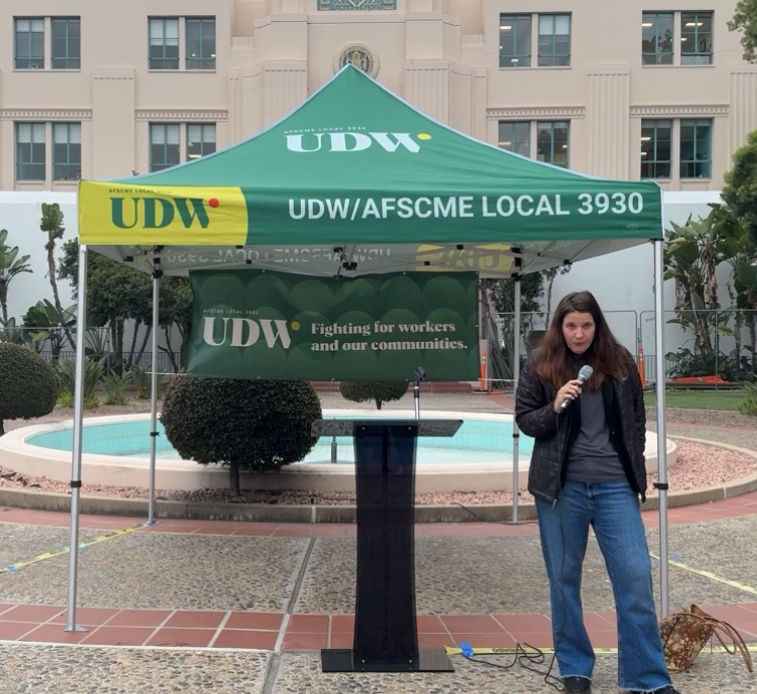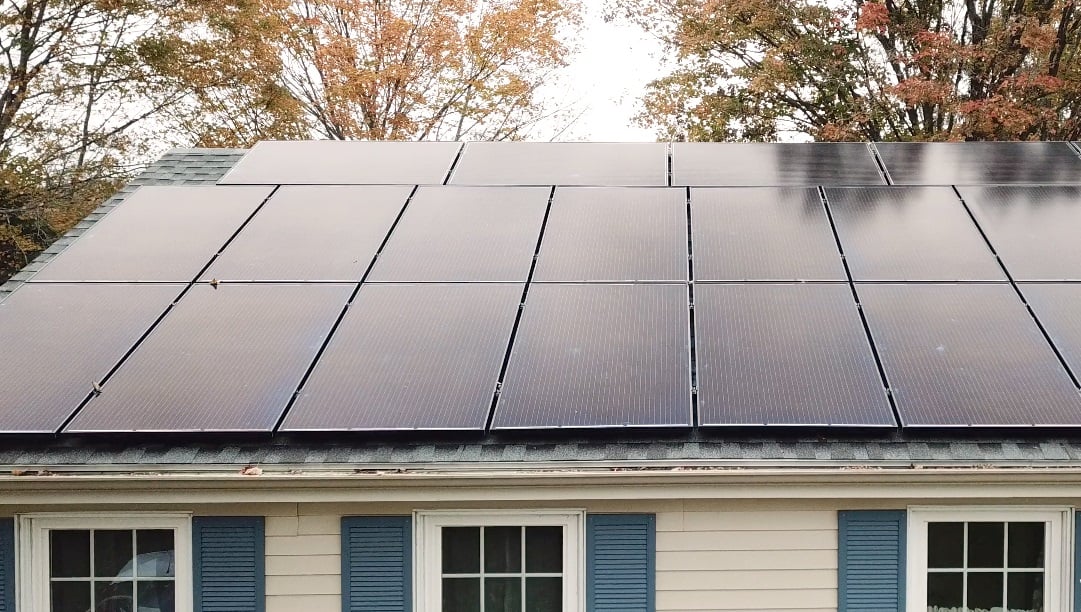Utah
Half of Utah’s record snowpack is gone. How are the state’s reservoirs faring?

Estimated read time: 5-6
minutes
SALT LAKE CITY — Utah’s reservoir system is quickly closing in on its mid-May average now that more than half of the state’s record 30 inches of snowpack has melted.
The state’s reservoir system, minus Flaming Gorge and Lake Powell, was back up to 65%, as of Monday morning, according to the Utah Division of Water Resources. In fact, more than 30 of the state’s largest reservoirs in the state are listed at either 61% capacity or higher, including more than a dozen listed above 80%.
The capacity percentage is 2.9 percentage points below the average for May 15 but 7.5 percentage points above where it was at last year.
“We’re in a much better place statewide with just a little less than half of our snowpack remaining,” Candice Hasenyager, the division’s director, told KSL.com. “We all hoped for a good year, and this year exceeded our expectations, hitting new records. … This is much more than we expected and we’re grateful for it.”
State of the snowmelt
The state’s reservoir system, not counting Flaming Gorge or Lake Powell, had fallen to 42% in November, about 12.6 percentage points below the average for the end of the year. The state withholds Flaming Gorge and Lake Powell from its statewide figure because those reservoirs don’t supply much of the state’s water needs, so it’s a better assessment of the state’s water supply.
The percentage began to recover because of the winter’s record-setting snowfall. Utah’s snowpack reached an average of 30 inches statewide in April, breaking the previous all-time record set in 1952.
Now all that snow is melting and the water within it is flowing into creeks, rivers and streams across the state. The statewide figure dropped to 50% of its peak on Saturday. As of noon Monday, about 16.5 inches of Utah’s snowpack had melted since the second week of April, leaving 13.5 inches of snow water equivalent left in the mountains, according to Natural Resources Conservation Service data.
It’s worth noting that 13.5 inches is still more snowpack than at any point during each of the last two snow collection seasons. It’s also worth noting different parts of the state have had different snowmelt trends, Hasenyager explains. That means how much snow that is left to melt depends on where you live.
“Some areas of the state have a lot more snow than others — that statewide chart shows an average,” she said.
How much is left in the snowpack in your region?
More than half of Utah’s statewide snowpack has melted since the second week of April. This is how much is in every basin that creates the statewide figure.
- Raft: 24.6 inches (73% of its season peak)
- Weber-Ogden: 21.8 inches (53% of its season peak)
- Provo-Utah Lake-Jordan: 20.5 inches (51% of its season peak)
- Bear: 18 inches (58% of its season peak)
- Beaver: 18 inches (60% of its season peak)
- Tooele Valley-Vernon Creek: 13.1 inches (35% of its season peak)
- San Pitch: 12.1 inches (45% of its season peak)
- Duchesne: 12 inches (49% of its season peak)
- Price-San Rafael: 11.9 inches (44% of its season peak)
- Upper Sevier: 8.7 inches (34% of its season peak)
- Northeastern Uintas: 7.1 inches (38% of its season peak)
- Southwestern Utah: 6.5 inches (23% of its season peak)
- Lower Sevier: 6.2 inches (21% of its season peak)
- Dirty Devil: 4.9 inches (25% of its season peak)
- Escalante-Paria: 2.9 inches (15% of its season peak)
- Southeastern Utah: 2.1 inches (8% of its season peak)
*Based on Natural Resources Conservation Service collected at noon on Monday.
For example, there are still 24.6 inches of snow water equivalent in the Raft River basin in northwest Utah, though most of that water doesn’t impact the state’s water supply. But there’s also an average of about 20 inches remaining in the Weber-Ogden, Provo-Utah-Lake-Jordan and Bear snowpack basins that flow toward communities along the Wasatch Front and Cache valleys.
On the other hand, almost all of the snowpack collected in the southern Utah basins has melted since early April. About 92% of southeastern Utah’s record 26-inch snowpack is gone, leaving it with 2.1 inches left to go, as of Monday. The five basins with the fewest snowpack left are all located in the south-central portion of the state.
How reservoirs are benefiting from the snowmelt
This is also why most of the southern Utah reservoirs are close to completely filled or are even exceeding full capacity at the moment. Many northern Utah reservoirs are also faring well at the moment because the snow that has melted already represents a normal snow year, even if it’s the halfway point of what was collected this season.
In fact, a major reason many of the northern Utah reservoirs aren’t full is that there’s so much water in this year’s snowpack that water managers have had to release stored water to avoid flooding concerns. The Weber Basin Water Conservancy District is the latest district to specifically release water out to the Great Salt Lake to help the struggling body of water while also lessening severe flood risks.

Hasenyager says her division believes most of the state’s reservoirs will refill this year. That said, the balancing of what’s left in the snowpack and controlled releases actually makes it difficult for the division to project exactly what Utah’s reservoir capacity will look like by the end of the snowmelt, which could happen in June or July. So it’s not really clear how high it will get beyond the current 65%.
“Water managers do have that tough job of making those daily decisions on how much to release and how much to store,” she said. “Predicting the exact end-of-melt capacity is really challenging. It’s dependent on … unpredictable factors like weather and water usage.”
Construction is another reason some other reservoirs aren’t filling up right now. For example, Yuba Reservoir in central Utah is only 12% full because of an ongoing project to repair the dam in the area. Hasenyager said she expects those reservoirs to refill once the project is completed, which will also factor into the final capacity figure this summer.
If we’re not in a drought, we’re preparing for the next one, so it’s really important for people to stay water-wise and look for ways to reduce as much water we use.
– Candice Hasenyager, Utah Division of Water Resources
Major reservoirs along the Colorado River Basin like Flaming Gorge, currently at 72% capacity, and Lake Powell, at 26% capacity, are expected to benefit this year, as well. The U.S. Bureau of Reclamation issued a report last month that estimated Lake Powell could rise anywhere from 50 to 90 feet, far from full capacity but easing back some hydrological concerns at the moment.
Meanwhile, Hasenyager said this winter shouldn’t stop Utahns from making decisions to reduce the water they use, especially as this year’s irrigation season begins. She points out that all the water people continue to save now will help create “breathing room” for the reservoirs, essentially prolonging the length of time a reservoir needs to be refilled the next time there is a severe drought.
“If we’re not in a drought, we’re preparing for the next one, so it’s really important for people to stay water-wise and look for ways to reduce as much water we use,” she said. “It’s critically important for all of us — as water users and residents of the state, but also for the environment and the Great Salt Lake — to make water-wise decisions.”
Most recent Utah drought stories
More stories you may be interested in

Utah
PODCAST: Utah Jazz offseason, Lauri Markkanen extension, and trades with Ken Clayton of Salt City Hoops

On this lastest Hoops Nerd podcast I was joined by Ken Clayton of Salt City Hoops. Ken is fantastic with his knowledge of the NBA cap/contracts/cba and how it correlates to the Jazz. I wanted to ask Ken about the different options for the Utah Jazz this offseason with Lauri Markkanen’s contract and he went through exactly what they can do, and the dates they can do it.
We also talked about the big game hunting the Jazz could potentially do this offseason. If they do go after a player, what will that look like and what can they offer? On top of that, let’s say they do make a trade happen to bring a big time star like Giannis Antetokounmpo. How good would the Jazz even be at that point?
A huge thanks to Ken Clayton for coming on. His handle is @k_clayt on twitter if you want to follow him. This pod definitely earned my first loud clap of the night!
Utah
Lost Utah cat found in Amazon box in Riverside area

Galena, a 6-year-old house cat from Utah, likes hiding and playing with cardboard.
Last month, the combination of the two made for a stressful trip in an Amazon package, a feverish search, a rescue near Riverside and a tearful reunion.
Her family is still waiting to “reintroduce cardboard to her again,” owner Carrie Clark said Tuesday, April 30, because they don’t want to stress her out.
Clark got Galena as a kitten after her aunt rescued a pregnant feral cat. The American short hair with calico and Siamese coloring has been a constant companion and source of emotional support.
“I’ve been through a bunch of health things and she and I have gone through all of that together,” Clark said. “And she’s she just has this extra great part about her personality that’s very loving.”
So when Galena disappeared Wednesday, April 10, Clark was beside herself.
They searched the neighborhood, put up flyers and posted notices on Facebook lost pet pages in Lehi, Utah.
“I cried my eyes out for seven days trying to figure out what had happened,” Clark said.
She also ran through all the worst-case scenarios, wondering if the cat could have gotten out of the house and been nabbed by a predator or run over by a vehicle.
Clark said she received a “text that changed my life” on April 17, saying that Galena’s microchip had been scanned, so Clark knew she had been found somewhere. Soon after, she got a call saying her cat was near Riverside, after being found in a box along with steel-toed boots that had been returned to an Amazon warehouse.
Clark’s husband had ordered several pairs of boots, kept one and returned the rest in a large box on April 10.
“We realized that that our sweet kitty must have jumped into that box without us knowing,” she said.
Amazon employees knew who to call when they found the feline — co-worker Brandy Hunter, who rescues cats, Clark said.
Hunter took the cat home and to the vet the next day, where the microchip was scanned.
Clark spoke with Hunter who “calmed me down and told me that my kitty was OK,” despite having spent six days in a cardboard box without food or water.
“I wanted desperately to be with her,” Clark said. She and her husband flew to California the next day, reunited with Galena at the veterinarian’s office and rented a car to drive home.
It was an emotional week.
“I went from hysterically laughing that she was stuck like that — we mailed our cat — you know … just the humor part of that, to hysterically crying all within like five seconds,” Clark said.
The family was lucky to get Galena back, Clark said, in part because the weather was not harsh during the time the cat was missing, the box was torn at a seam, allowing her to get more air, and because Hunter took her to a vet and had her scanned for a microchip.
Since word got out, Clark has been sharing her cat’s story — along with advice to microchip your pets and to double-check your Amazon boxes before returning them.
Utah
Utah tops Western states in Chief Executive Magazine's 2024 survey of Best & Worst States for Business – Utah Business

Nashville, TN — CEOs surveyed for Chief Executive magazine’s annual list of the Best and Worst States for Business ranked Utah as the top Western state and the ninth-best state for business overall, moving up from last year’s tenth spot. The rankings, released in the Spring issue of Chief Executive, reflect Utah’s ongoing efforts to create a welcoming environment for businesses of all sizes and industries.
The ranking is based on a survey of more than 500 CEOs across the country who were asked to rate states based on their opinion of how easy it was to do business in that state versus others. Utah’s high ranking is due in part to strategic policies and smart fiscal decisions.
“Utah’s stellar performance as a top state for business underscores its exceptional qualities,” said Chris Chalk, Publisher, Chief Executive magazine. “Its dedication to economic growth and prosperity sets a strong example, making Utah a standout destination for businesses of all sizes and industries.”
Large tech and manufacturing deals demonstrate the growth in the Beehive State and underscores its favorable ranking. Texas Instruments announced in February 2023 it will invest $11 billion and create up to 800 jobs at a semi-conductor wafer fabrication plant in Lehi, while Proctor & Gamble Paper Products Company announced in February 2023 a $400 million capital investment.
“Professional, scientific and technical services remain one of the fastest growing sectors in the state, said Theresa Foxley, president and CEO of the Economic Development Corporation of Utah. “The growth in Utah is the result of top-notch higher education institutions and a thriving innovation economy that has been expanding over the past decade.”
Here’s what some of the CEOs we surveyed had to say about why they ranked Utah so highly:
“Large workforce, low taxes and restrictions, quality of life”
“Utah’s workforce is exceptional.”
“Friendly, welcoming business growth environment in these states. Utah has created an environment for active collaboration between industry and end-users. The Utah Advanced Materials and Manufacturing Initiative or UAMMI, is a collective group of industry representative, private industry, Govt organizations and higher education, which provides integration assistance between interested parties. UAMMI has been an overwhelming success in the State of Utah.”
The Top 5 States for 2024:
1. Texas
2. Florida
3. Tennessee
4. Arizona
5. North Carolina
The Bottom 5 States for 2024:
46. Washington
47. New Jersey
48. Illinois
49. New York
50. California
Biggest Gain, 2023-24:
North Dakota, + 13 to 16th place
Biggest Loss, 2023-24:
Colorado, – 16 to 29th place
Enhanced Coverage online: https://chiefexecutive.net/best-worst-states-business/
About Chief Executive/Chief Executive Group
Chief Executive Group, a leading community for business leaders worldwide, exists to improve the performance of U.S. CEOs, CFOs, CIOs, CHROs and corporate directors. We publish Chief Executive magazine, ChiefExecutive.net, Corporate Board Member magazine, BoardMember.com, StrategicCFO360.com, StrategicCIO360.com and StrategicCHRO360.com, and run some of the nation’s most essential peer-networking communities, including The CFO Leadership Council, Chief and Senior Executive Networks, Corporate Board Member Network and The American College of Corporate Directors. Learn more at ChiefExecutiveGroup.com.
For media inquiries, please contact:Dan Bigman, Editor, Chief Executive, [email protected], 203-889-4980
SOURCE Chief Executive Group
-

 News1 week ago
News1 week agoLarry Webb’s deathbed confession solves 2000 cold case murder of Susan and Natasha Carter, 10, whose remains were found hours after he died
-

 World1 week ago
World1 week agoHaiti Prime Minister Ariel Henry resigns, transitional council takes power
-

 News1 week ago
News1 week agoFirst cargo ship passes through new channel since Baltimore bridge collapse
-

 World1 week ago
World1 week agoUS secretly sent long-range ATACMS weapons to Ukraine
-

 World1 week ago
World1 week agoSpanish PM Pedro Sanchez suspends public duties to 'reflect'
-

 News1 week ago
News1 week agoAmerican Airlines passenger alleges discrimination over use of first-class restroom
-

 Movie Reviews1 week ago
Movie Reviews1 week agoHumane (2024) – Movie Review
-

 Education1 week ago
Education1 week agoVideo: Johnson Condemns Pro-Palestinian Protests at Columbia University


















